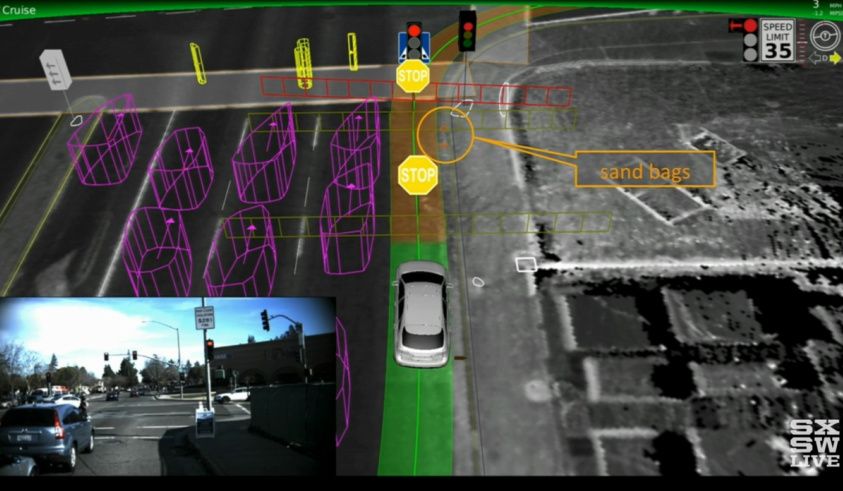Chris Urmson, the director of Google’s self-driving car->ke5282 project, took the stage at the South by Southwest festival in Austin, Texas to shed some light on the circumstances surrounding the road accident caused by one of the tech giant’s autonomous vehicles. Word of the crash->ke277 only made the news last week even though the actual collision between Google’s self-driving Lexus RX and a city transit bus occurred on February 14, 2016.
At the conference, Urmson explained that all of Google’s autonomous vehicles->ke5282 have been taught to move to the right-most lane when they plan to turn right, something all human drivers are also taught to do. The RX->ke496 did just that, but just before it was supposed to turn right, it detected sand bags on the road ahead it, prompting it to make a sudden stop.
Once the light turned green, the car prepared to take the lane to the left, but not before detecting a city bus that it anticipated would slow down to give way to the car. But the bus didn’t slow down and just as the car was making the lane change, it hit the side of the bus at two mph, resulting in minor damages to both vehicles.
No one was injured from the mishap, but seeing as Google assumed responsibility for causing the crash, Urmson’s team immediately began implementing “3,500 new tests” to ensure that its autonomous cars wouldn’t be responsible for another crash of that nature again. These tests don’t cover the system of just one autonomous vehicle. On the contrary, the self-driving team said that the tech is fed through its fleet of autonomous cars through deep learning technology, enabling all the Google cars to share these tests and experiences from real-world driving situations. The tech giant believes that situations like the one can be used as a learning tool for its entire fleet of cars, ensuring that it doesn't happen again.
Continue after the jump to read the full story.
Why it matters
There’s something to be said for Google taking the proactive approach, not only on taking ownership of the collision with the city transit bus, but more importantly, on ensuring that the lessons learned from that accident would be applied to its entire fleet of self-driving cars.
At the end of the day, that incident was a crucial learning experience for the technology and it probably happened at the right time considering how the development for the tech is still in the early stages. Better for it to happen now than in the future where it could’ve been worse, right? The accident also happened at low speeds, so that’s another fortunate thing to come out of the entire episode. Nobody got hurt other than the two vehicles.
There is something ironic about the whole episode because Google has repeatedly emphasized that the point of its entire project is to increase road safety to at least curb down the alarmingly high number of traffic deaths (around 1.2 million cases) that happen all over the world in any given year. But if this accident serves as benchmark that allows Google to take this technology to the next level, it’s the sort of irony that I’m sure the company is willing to stomach.

